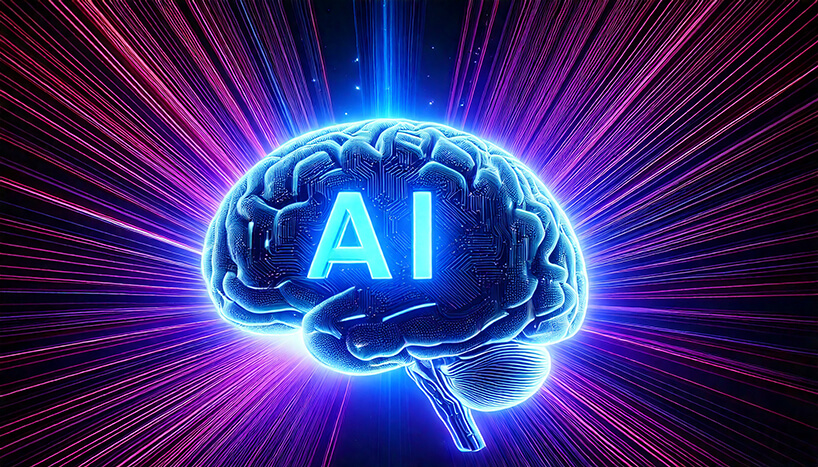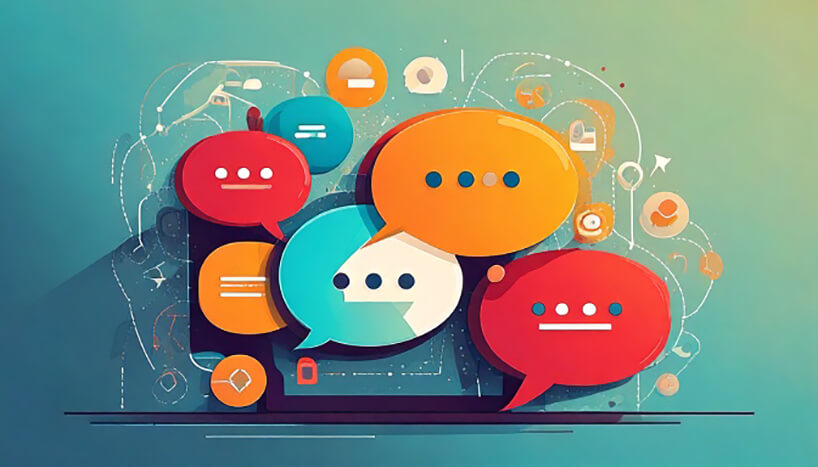9 things to consider when building a chatbot for website

Before setting up a chatbot for website, consider what it will do, how you’ll implement it, and the data you’ll collect once it is up and running.
Customer service chatbots began emerging at scale in 2016. Companies realised they could integrate these systems with social media to triage customers, answering basic questions and then escalating to human agents if necessary.
Things continued like this for several years until the introduction of chatbots powered by large language models (LLMs) from 2020 onwards. Not only could these systems understand natural language, but they could also use neural network-based approaches to reason and provide intelligently-synthesised answers. In 2023, analysts expect chatbots to generate over $100 billion in ecommerce transactions. Consequently, more companies are considering building chatbots for around-the-clock customer support.
Building a chatbot can seem challenging. Therefore, this post describes nine things you need to consider when building a chatbot. Read on to learn more.
1. Your chatbot’s scope and purpose
The first step is to consider your chatbot’s scope and purpose. What do you want it to do?
Many famous chatbots, like ChatGPT, are general question-answering machines. However, you may want to give your implementation a specific slant. You may also want to limit what it can say to reduce the risk of brand damage or wasted computational resources.
Try conceptualising your chatbot’s purpose. It might be to:-
- Troubleshoot common user problems
- Guide customers towards particular products and services
- Market new products
- Inform customers about how to use a specific channel or website feature
Once you have a clearer understanding of your chatbot’s purpose, the scope should become more apparent.
2. The platform and channel
The next step is to choose a platform or channel for your chatbot. Where will customers access it?
Good options include:-
- Your website
- Brand app
- Telephone answering service
- Social media channels
The best chat software for business operators usually includes options for multi-channel implementation. Solutions take care of the background technical challenges, permitting simple integrations that don’t require extensive technical expertise.
3. The conversational flow
After that, consider the flow of the conversation users will have with the best chatbot for website. You want the interaction to align with your business objectives, such as offering customer service or making sales.
Many firms export sales scripts to their chatbots or use these as inspiration. Others copy their customer service dialogues.
As you are doing this, you’ll need to consider how your chatbot will:-
- Provide feedback or confirmation to users
- End conversations gracefully
- Ask questions in the right sequence to generate a natural rhythm to the conversation
- Handle different user inputs (such as non-standard natural language questions)
Once you have clear answers, you should feel more confident moving on to the next step.
4. The AI tools you will use
Once you define the conversation types your chatbot will have with customers, the next step is to consider the AI tools you will use. You may need a combination of LLMs and natural language processing (NLP) to provide users with optimal responses to their queries.
Understanding how the chatbot will learn from user feedback and data is essential. You should consider and define how the system will respond to ambiguity, user uncertainty, and errors. You’ll also want to think about whether implementing an AI chatbot with specific skills is ethical in your case, depending on your industry.
5. Testing
Another top consideration is testing. Before you roll your chatbot solution out to the public, you’ll need to check if the prototype does what you want it to do. You’ll need to put procedures in place for:-
- Debugging and testing functionality and performance
- Seeing whether the chatbot meets internal quality standards
Having a framework in place before launch enables you to determine if your chatbot meets internal standards.
6. How your new chatbot will integrate with your digital strategy
You’ll also want to consider how your chatbot will integrate with your digital strategy. Will you use it as top-of-funnel marketing on social media platforms or implement it on your website?
Chatbots are an excellent way to engage your audience without dedicating vast teams to the process. However, they require implementation in a way that makes sense for your business model.
Consider using chatbots:-
- On social media channels
- As an augmentation to traditional CTAs
- As a way to provide customers with additional information to close the sale
7. Integrations
You’ll also want to pay special attention to integrations. These are opportunities to make your chatbot more useful and powerful.
Numerous integrations are available for chatbots in today’s software landscape. You’ll need to consider the ones that make the most sense for your brand.
For instance, you could integrate a chatbot with:-
- Payment services to assist with billing enquiries
- E-commerce platforms to answer quick and simple questions about products, shipping, and billing
- CRM systems to enable agents to query customer profiles and collect information automatically
- Email marketing tools
After running through this list, you may discover your business model requires multiple integrations. Fortunately, modern enterprise software makes it easy to integrate chatbot solutions. Most come with specific instructions, or the vendor will manage them for you.
8. The collection and analysis of data
Another consideration is the collection and analysis of data. You will need to think about how you’ll gather and use the information your chatbot collects from customers.
This data provides insights into customers’:-
- Needs
- Satisfaction
- Interests
- Preferences
- Feedback
- Behaviour
Collecting this information lets you make better business decisions and provide superior service. It also lets you find ways to improve your chatbot’s performance.
9. The improvements you can make over time
Lastly, it is worth considering how you will identify the improvements you will make to your chatbot. You will always need to refine how it operates after you set it up.
As such, you’ll want to put systems in place that let you monitor feedback, performance, and errors. The functionality of your chatbot should meet the expectations of your customers and your business’s strategic requirements.
Building A Chatbot
Click4Assistance’s chatbots seamlessly integrate with our multi-channel communication tool, which works across Messenger, WhatsApp and other platforms. Our managed service sorts out chatbot integrations for you, from initial consultation to setup and ongoing training, analysis, and improvement.

























